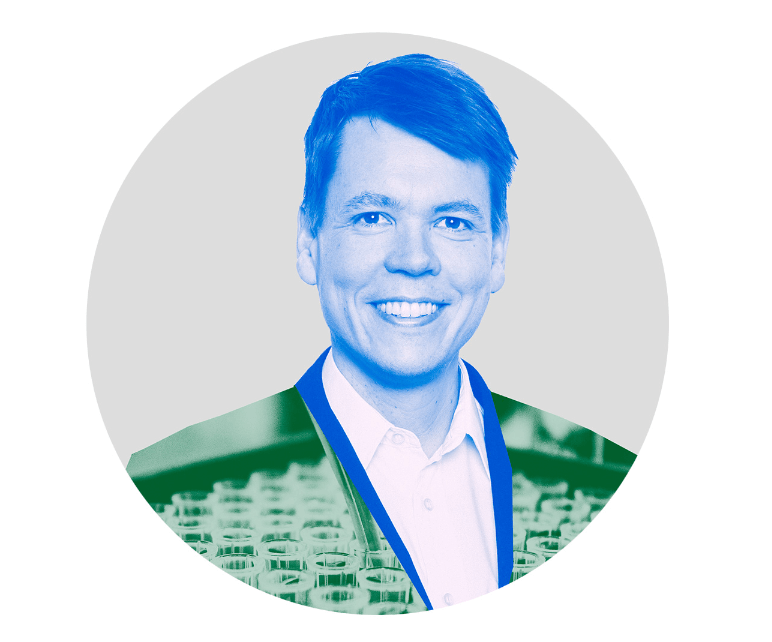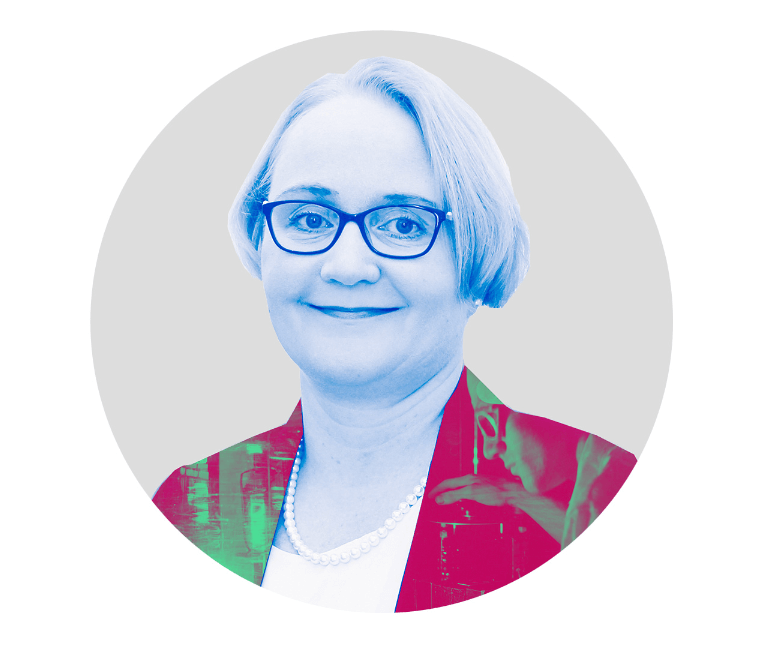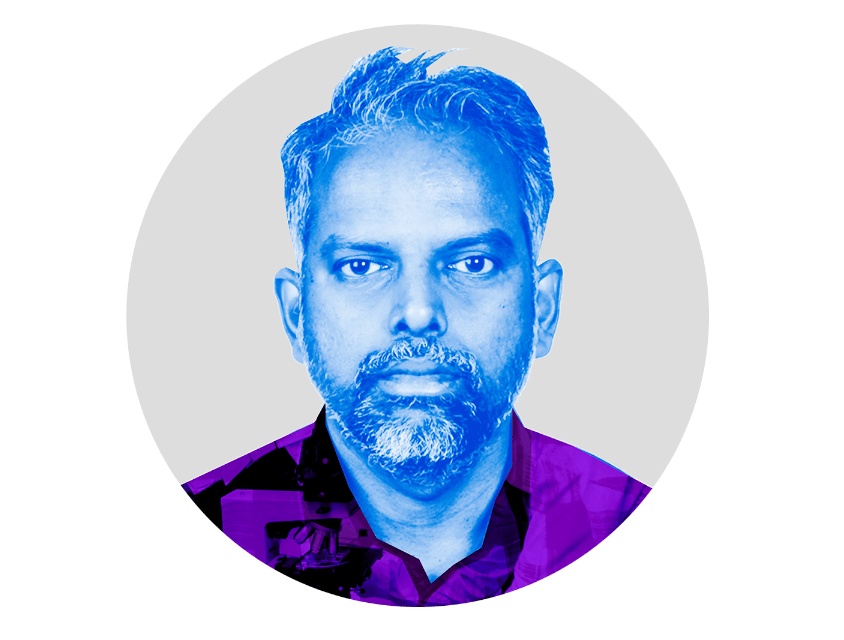Ilona Malinen
Aalto University is renowned for both its ambitious research and impressive track record in creating entrepreneurship opportunities for its students. When these two elements collide, real impact happens. As large-scale effects often happen through business, Aalto strives to support its researchers in taking their work further. Real innovations deserve to be shared with the world.
This article is part of a series of interviews that highlight the entrepreneurial mindset of the Aalto University ecosystem. Three research-driven start-ups from Aalto University illuminate how they found their way into business.
JUHA VARTIAINEN,
IQM

Twenty years ago Juha Vartiainen took a course in quantum computing at Aalto University. In hindsight, that course set many things in motion in his life. According to Vartiainen, the beginning of the millennium marked the first wave in quantum computing and sparked a lifelong fascination in him for the topic. “Right now we are experiencing the second wave. We are reaping the fruits of the studies we started twenty years ago.” Vartiainen explains.
The floorball game that changed the future of quantum computing
Vartiainen worked in the field of software applications after finishing his PhD in 2005 at Aalto University. Meanwhile, a former course mate Mikko Möttönen did pioneering research work at the world-renowned Quantum Computing and Devices (QCD) lab. The inciting conversation for a business soon to become IQM was held outside a floorball rink three years ago. “We had always joked about a business venture together”, Vartiainen says. Möttönen got strong encouragement from Risto Siilasmaa and Ilyas Khan to start a business around his work at QCD. Möttönen asked if Vartiainen might be interested to join. “I recall saying ‘Let’s do it!’”, Vartiainen laughs.
Quantum physics – Finally trending!
Vartiainen and three other doctors in quantum physics started IQM as a spinoff company of Aalto University and VTT Technical Research Centre of Finland. “The title ‘entrepreneur’ somehow sounds a bit foreign to me. I guess the conventional connotation brings me an idea of young people with their laptops” Vartiainen reflects on his newfound status. “My background as a researcher has provided a good foundation for entrepreneurship, although very different things are at focus.” Vartiainen finds his work at IQM rewarding: “This field has been a topic for academic research for years, now it’s under huge amounts of interest and investment. It personally delights me to see how public awareness of quantum computing has skyrocketed in recent years.”
Top education enables innovations
According to Vartiainen, a key factor for IQM to get off the ground was the team of researchers gathered from Aalto University’s QCD lab. “It was one of the boxes we were able to check off straight away. A start-up needs a capable team in order to function.” According to him, Aalto University provided important assistance in the early moments of the company: “There are people who supported us. It’s important that close-by in Otaniemi there’s help around.” Vartiainen and his team also benefited greatly from Micronova, the joint facility of Aalto and VTT. “It’s a great way for companies just getting off the ground to start their operation.” Vartiainen emphasizes that Aalto’s high level of education in quantum physics is paramount for IQM’s existence. “Without the advanced level math, physics, and quantum courses we wouldn’t have this level of research and innovations needed in our operations.”
Maria Lavonen,
Lightopsy

With a background in physics, business strategy, and international marketing at Aalto University’s predecessor, Helsinki University of Technology, Maria Lavonen is an expert in commercializing technology. After 15 years in Med Tech, Lavonen found her way back to Aalto. “I was at a crossroads in my career and heard of an interesting research project through my networks.”
A game-changing biopsy
Lavonen joined Lightopsy, a project built around an innovative technology that enables more accurate biopsy acquisition with AI-based tissue recognition. The project is a collaboration between Aalto University, University of Oulu, and the Oulu University Hospital and led by Miika Nieminen, Ph.D., Professor of Medical Physics, Chief Physicist from the University of Oulu and Heikki Nieminen, assistant professor in the Department of Neuroscience and Biomedical Engineering from Aalto University.
“The research got wind under its wings after a small-scale project in Oulu. It gave encouragement to believe this technology could really make a difference.” Lavonen says. “We then applied Business Finland’s ‘Research to business’ funding, which we got, and have now wrapped up the project successfully.”
The road to success is paved with collaboration
According to Lavonen, Aalto University was able to offer valuable support in commercialization and investor funding. “We benefited from Aalto’s start-up center and Aalto Innovation Service took part in a steering group. We were able to evaluate the research from many angles, how it could be applied to the market.” The interdisciplinary Aalto ecosystem has been a great environment for Lightopsy. “There are so many opportunities to collaborate with industrial designers and business experts. It’s tremendously valuable.” Lavonen concludes.
Working as a business developer closely with a team of researchers, Lavonen sees collaboration as natural. “The researchers are top professionals in this field. My responsibility is to think of the business side. I see working together as a huge asset, and enjoy when people are able to focus on what they do best.” Lavonen holds an entrepreneurial mindset as an important asset. “To me, it means that things will get finished. It’s a very important attitude in a young company.”
For Lightopsy, the future looks promising. “We got great results during the Business Finland -funded project.” Lightopsy will next focus on further commercializing the recent work in product development. “Collaboration with University of Oulu and Oulu University Hospital has been smooth, and it excites me to think what this technology can do for example in cancer research with more accurate biopsies,” Lavonen says.
Nagarajan Subramaniyam, Xfold imaging

A lifelong passion for problem-solving in the field of mathematics and physics has led Nagarajan Subramaniyam to an extensive career as a researcher, and more recently to entrepreneurship. Originally from India, Subramaniyam moved to South Korea in 2005 for his Ph.D. and arrived in Finland and Aalto University as a postdoc researcher in 2009.
Tiny droplets, huge impact
Subramaniyam’s expertise lies in the smallest of things: Nanotechnology and nanoscience. His company, Xfold Imaging is a spin-out from Aalto University and the University of Helsinki. The company was founded around an innovation that enables enhanced accuracy in studying cellular structures and bio-molecules. Their nano-coated glass slide enables better imaging without expensive super-resolution microscopes.
Shortly after arriving in Aalto, Subramaniyam started to explore Raman spectroscopy and imaging. He had been thinking about how to see small droplets that are below 300 nanometers, without adjusting the microscope. “I got an idea. Why don’t we modify the glass? All the problems come down to not being able to see the smallest things. Could we improve the sensitivity of the microscope?” Subramaniyam got in touch with Elina Ikonen, Professor at the institution of Biomedicine at the University of Helsinki, and worked from 2014 to 2015 with initial funding to showcase his findings on the topic. “Progress was good. We started to explore different microscopes, collaborated with universities to see if we could push the technology further.”
Sweet spot in the start-up center
The team applied for funding from Business Finland and received it for 18 months. “From the very start, we received good mentorship from Aalto. When applying for the funding, we got help in preparing the application. The support for the business side was important.” Xfold is located at the start-up center and does its manufacturing and R&D at Micronova lab. “It’s a great advantage to have the center close to the lab. We took part in events, and participated in Slush where we got very good exposure and networked with investors and customers.” Subramaniyam also mentions the help received in patenting the innovation. “They have a very good plan and team in place for securing your idea.”
The shift from research to business hasn’t always been easy. “You need to modify your research development and consider many parameters. Honestly, I learned a lot of things when I turned from researcher to entrepreneur.” Now, in the wake of a global pandemic, Xfold has managed to quickly develop its product to serve the global market and offer tangible help with better testing at a relatively low price point. “I am very happy that this idea is going out to the world and to benefit people. It gives me a great deal of pleasure to see it.”


